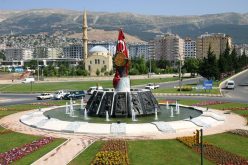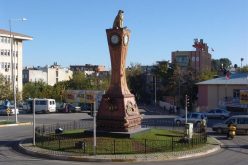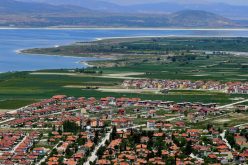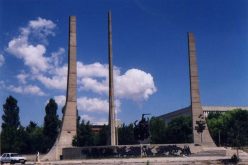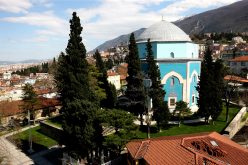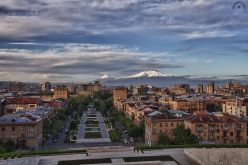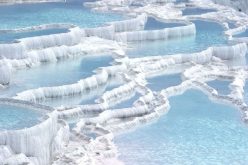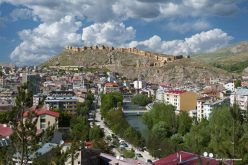Kütahya
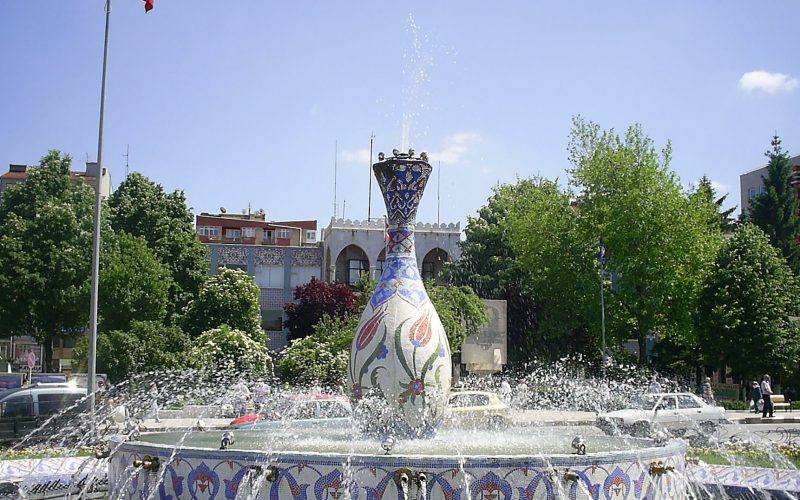
Kutahya
Kutahya represents a potentiality for tourism with its developing industry, underground sources, university, thermal sources, hand crafts and history, while visiting Kutahya do not forget that .The first gold exchange market in the history had been established in Aizanoi, (Kutahya). The first porcelain museum in the world is in Kutahya. The most effectively and successfully protected antic city of Anatolia is Aizanoi, Evliya Celebi was from Kutahya. The first collective labor agreement had been signed in Kutahya,The thermal sources of Kutahya are cure for thousands of illnesses.
The history of the region dates back to as early as 3rd millennium B.C. when it was called Kotiaion or Cotyaeum – “the city of the Goddess Kotys”. Around 12th century, the region got attached to the Phrygian kingdom and thus became the most important city of the country. Later, though Phrygian kingdom collapsed, Kotiaion retained its strong position. In 1071 C.E. the Seljuks conquered the city only to lose and reconquer it from the European crusaders. Around 1302 Kutahya became the capital of Germiyan Turkmen principality and in the next century it became part of the Ottoman Empire. In 1514, Sultan Selim-I defeated the Persians and resettled the tile workers from Tebriz in Kutahya and Iznik, thus leading the city to emerge as an Ottoman center of ceramic industries. Much later, in the 19th century, with the growth of Eskisehir, Kutahya lost some of its glamour and economic importance.
Places To Visit;
Ancient Cities Remains of Aizanoi Antic City had been established to the two sides of River Penkalas. The name of the city comes from the mythological hero named Azan, who was the son of Water Jinn Erato, and the legendary king Arkas.
Mozaikli Hamam (Mosaic Bath) In the 3rd Century, a second bath had been constructed in the bath, which had been built in before. This bath is called as “Mozaikli Hamam”. There is a high quality mosaic floor in that bath representing the illustrations of Santry and Menad. In the 4th and 5th centuries the bath had been rearranged and used as the center for the bishops.
Exchange Market (Mycelium / Round Building) The first exchange market had been founded here in Aizanoi antic city. This building, which had been used as the grain market 2nd century AC, is called Mycelium. On the restored walls of the building, there written the price determinations of King Diocletian for struggling with inflation. These writings had been written there in 301 year.
Zeus Temple: The construction of the temple had begun 2nd century AC . The temple had been planned as Pseudodipteras. It had been established on a stage with the dimensions of 53 x 35 meters. There is a great hall under the temple, which had been obscured by rubble. Stadium and Theatre. There are no other examples of such a combination of a Stadium and a Theatre like in Aizanoi. The construction of the complex had begun in 1st century AC and had been completed in the 3rd century.
Bridges and Avenue with Antic Columns: The city of Aizanoi had been founded on both sides of the Stream Koca, which had been called as Penkalas in ancient times. Only two bridges had been able to reach today. Both bridges have 5 belts and they are still being used.
Castles Kutahya Castle is at the Hisartepe Locality, which had been used as a residence from ancient times till today. The castle has 70 towers and consists of 3 parts. These are called Kale-i Bala, Kale-i Sagir and Diş Towers. There are two fountains and three mosques in the castle.
Mosques Çinili Cami (Porcelain Mosque) The mosque had been constructed in 1973, by taking the Middle Asia Turkish architecture as example. Inside of the mosque consists of beautification made by pencil, and outside of it had been constructed with blue Kutahya porcelain.
Great Mosque (Ulu Cami) The construction of this mosque, which is the most beautiful and greatest mosque of Kutahya, had begun in the times of Yildirim Beyazit, and had been completed in the times of Fatih Sultan Mehmet in 1401. The restoration of the mosque had been made by Architecture Sinan, during the times of Süleyman the Magnificent. The muezzin stand having 4 columns, and the representation of Mecca on the wall of the mosque should be seen by the visitors.
Turning Mosque (Dönenler Camii) This mosque had been constructed during 14th century. It is the first “Mevlevihane” (Lodge of Mevlevi Dervishes) of Kutahya, founded by the grandson of Mevlana, Ergun Çelebi. Market Places (Bazaars) There are two Bazaars in Kutahya. They had been established in the second part of 15th century by the Proficient of Gedik Ahmet Pasha.
The Great Bazaar has 4 gates. In the Bazaar there is a fountain and there are 17 shops. It is being used as a market place by the vegetable men.
The Small Bazaar has two gates. It had been made of bricks and iron sheet. It used to be used as the bazaar for the heavy clothes, armor and diamonds.
Traditional Kutahya House Germiyan Street The Germiyan Street is a place where the 18th century Kutahya houses are being protected collectively. It is the most beautiful historical example of Kutahya’s historical urban structure. These houses in Germiyan Street are all made of timber and they have two or three floors.
Old City Palace The construction of the city palace had begun in 1908 and finished at 1911 while Fuat Pasha was the governor of the town. The building had been restorated in 1998. It is one of the most interesting examples of the late Ottoman civil architecture. Promenade Mt. Murat Mt. Murat is at the south of Kutahya. It is 30 km away from Gediz and it is 2312 meters high. It is the highest mountain in Kutahya and in Internal Aegean Region. The Mt. Murat provides alternative tourism possibilities with its clean air and fresh water, with its a variety of bird species living in, and especially with its rich thermal sources.
Çamlica: Çamlıca is at the west side of Kutahya and its 5 km far away from the city center. It had been arranged as a recreation and resting area in the pine forest. It is a large promenade area. Pine trees, clean and fresh water, clean air, and the relaxing sightseeing of the area provides a great pleasure to the visitors.
Enne Dam: It is at the west side of Kütahya and 18 km away from the Kutahya city center. The dam had been constructed in order to provide the water need of Seyitömer Thermal Electricity Central is also being used for fishing and picnics.
Porsuk Dam It is at the northeast of Kutahya, and 20 km away from the city center. The dam had been constructed in order to protect the environment from the floods of River Porsuk. Today it is also being used for fishing and picnics.
Kuruçay Pond: The pond is at the south of Tavşanlı District and 7 km away from the city center. The pond had been constructed for watering purposes, and it is also being used as a picnic area with its clean and unpolluted environment.
Domaniç Forests:The Domaniç Forests take place at the north of Kutahya. These forests are widen to a large area. The flora of Domaniç is very rich. There are a variety of endemic species and monument trees in the area.
Hidirlik: Hidirlik is one of the most important and popular promenade areas of Kutahya. National & Natural Parks Mızık Çam (Pine) Natural Monument is a monumental pine tree which is more than 700 years old. Kaşalıç Natural Protection Area. The park is in the village of Durubey village, in the province of Kutahya in Central Anatolia. The park can be accessed via the forest road 5km after Domanic, towards Inegol. The area bears the characteristics of a Black Sea forest ecosystem, even though it lies in Anatolia. Beech and black pine forests grow naturally in the area, and other dominant species include oak, poplar, wild pear, blackberry, coltsfoot, meadow saffron, foxglove and wild strawberry. The forest is also home to bears, wild boars, deer, foxes, rabbits and hedgehogs. Vakıfçamlığı Natural Protection Area Kütahya – Vakif Çamligi Nature Reserve. The Vakif Camligi is in the village of Vakif, near Tavsanli in the district of Kutahya. The grove is accessed via the 12km road off the Kutahya-Tavsanli highway. This pine grove is the only area in the world where the Ehrami black pine, a rare and endangered tree, grows naturally. Alongside this is the ebe pine, which only grows in Turkey, and the combination of the two growing together makes it a unique ecosystem. In addition, other species include juniper, oak, popular, willow and lime. Wildlife in the area includes fox, badger, pig, rabbit, partridge and quail. Ornithology Areas Bustard Birds, which are the biggest birds of Anatolia do only live and reproduce in Kuyucak, Nuhören and Pusan Villages of Kütahya. The Bustard Birds are under protection and the population of these birds is increasing each year.
Thermal Springs Kutahya is a place which has a variety of Thermal Springs. Harlek and Mountain are the most important and interesting thermal centers of the region. Yoncalı, Gediz Ilıcasu, Simav Eynal, Tavşanlı Göbel, Emet, Yeşil and Kaynarca are the other important Thermal Springs. Caves of Kütahya Caves of Frig Valley. The caves are located at 55 km away from Kütahya, in the İnlice quarter of last Kütahya village of Ovacık, where the city borders of Kütahya, Afyon ve Eskişehir intersects. There are hundreds of caves inside the Frig valley which covers an extremely wide area and these caves are carved by hands for the purposes of shelter, accommodation and tombs. Inside the first section of rocks, two churches were discovered.
There are frescos on the walls of these two churches named Tekli Kilise (Single Church) ve Çiftli Kilise (Double Church), respectively. Also inscriptions written by root paint are present on the walls. Meander patterns and cross signs are also visible. This valley was used by Frigs between years BC 500-600 and later on, by Byzantiums.
The Deliktaş Castle, which was examined in two parts, are also used by Frigs and Byzantiums. For shelter and defense purposes the rocks were carved. There is a large chapel founded here. Secret passages and galleries connect lots of rooms and chambers to each other. The upper parts of the rocks are carved in the shape of ramparts. The third section is the place where a natural castle called Penteser castle is present. This place is also carved for defense purposes and there are various tombs and caves present at this location. This valley is covered with pine trees and the natural beauty can challenge the beauty of Ürgüp.




